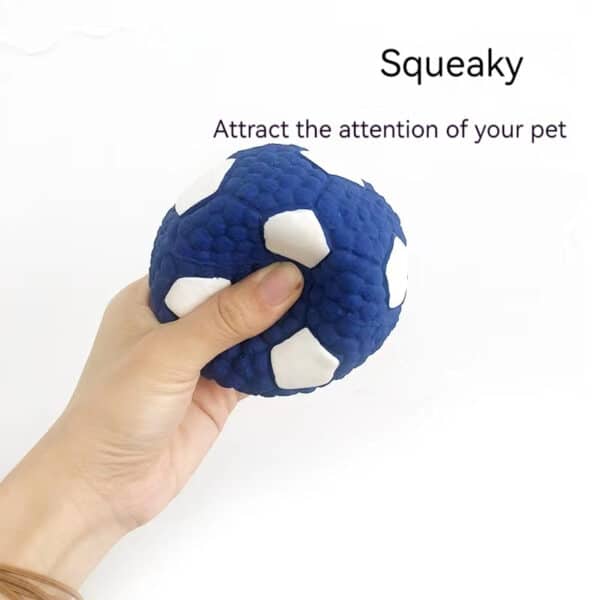Raising a cat and a dog together can be both rewarding and challenging. Despite the common saying “fighting like cats and dogs,” these animals can live harmoniously with careful planning and patience. This comprehensive guide provides detailed steps and insights to help you foster a peaceful relationship between your cat and dog, supported by academic research and expert advice.
Understanding the Basics

Different Species, Different Needs
Cats and dogs have different social structures and communication styles. Dogs are generally pack animals with a clear hierarchy, while cats are more territorial and solitary by nature. Understanding these differences is crucial to creating a harmonious living environment (American Kennel Club, 2021). Recognizing these distinct behaviors helps in managing expectations and creating appropriate environments for each pet.
Early Socialization
-
⚽ Latex Soccer Ball (Small) Dog Toy ⚽
Original price was: $12.99.$10.99Current price is: $10.99. -
All-Cotton Pet Sling Carrier – Adjustable Shoulder Strap, Breathable, Holds Up to 9kg
$39.99 – $43.99
Early socialization plays a significant role in how well cats and dogs will coexist. Exposing them to each other and various environments at a young age can help reduce fear and aggression (Whole Dog Journal, 2021). For instance, puppies and kittens that are introduced to different species early are more likely to develop positive relationships with them.
Step-by-Step Introduction

1. Prepare Separate Safe Spaces
Before bringing the new pet home, prepare a separate space for each animal. Cats need vertical space such as shelves or cat trees where they can feel secure, while dogs need a designated area with their bed and toys. This separation helps reduce stress and territorial aggression (Spot and Tango, 2021).
Example:
When introducing a new cat to a dog household, a study found that cats who had access to high perches showed less stress and were more likely to explore their new environment (PLOS ONE, 2021).
2. Scent Exchange

Start by exchanging bedding or toys between your cat and dog. This helps them get accustomed to each other’s scent, which is a non-threatening way for them to start recognizing each other (American Kennel Club, 2021).
Example:
A successful case involved a family who placed the dog’s blanket in the cat’s bed and vice versa. Over a week, both animals began to show less curiosity and more acceptance of each other’s scent (PLOS ONE, 2021).
3. Controlled Visual Introduction

Use a baby gate or a slightly ajar door to allow the pets to see each other without physical contact. This step lets them observe each other from a safe distance and reduces the likelihood of immediate confrontations (Whole Dog Journal, 2021).
4. Positive Reinforcement

Reward both pets with treats and praise when they display calm behavior around each other. This helps create positive associations with each other’s presence (Spot and Tango, 2021).
Example:
A family trained their dog to associate seeing the cat with receiving a treat. Over time, the dog began to look forward to the cat’s presence because it meant something positive was coming (Whole Dog Journal, 2021).
5. Gradual Physical Interaction
Once both pets seem comfortable, allow brief, supervised meetings in a neutral area. Keep the dog on a leash to prevent sudden movements that might scare the cat. Gradually increase the duration and frequency of these interactions as they become more accustomed to each other (Whole Dog Journal, 2021).
6. Monitor and Adjust
Continuously monitor their interactions and watch for signs of stress or aggression, such as growling, hissing, or tense body language. If any signs of distress occur, separate the pets and try again later. Patience is key (PLOS ONE, 2021).
Long-Term Strategies for Peaceful Coexistence

1. Maintain Individual Attention

Ensure that both pets receive individual attention and exercise. This helps prevent jealousy and reduces pent-up energy, which can lead to aggressive behavior (Spot and Tango, 2021).
2. Provide Safe Retreats
Always provide safe retreat areas for your cat where the dog cannot reach. This gives the cat a sense of security and control over their environment (American Kennel Club, 2021).
3. Consistent Training
Training your dog to follow basic commands such as “sit,” “stay,” and “leave it” can help manage their behavior around the cat. Consistent training and reinforcement are essential for maintaining control and ensuring safety (Whole Dog Journal, 2021).
4. Address Behavioral Issues Early
Address any behavioral issues early with the help of a professional trainer or veterinarian. Early intervention can prevent minor issues from escalating into significant problems (PLOS ONE, 2021).
5. Counter-Conditioning
Counter-conditioning is an effective method for changing a dog’s response to a cat. By associating the cat’s presence with positive experiences, such as treats, the dog can learn to view the cat as a source of good things rather than a target for chasing (Whole Dog Journal, 2021). This technique is supported by numerous behaviorists who advocate for its use in multi-pet households.
Example:
One family successfully used counter-conditioning to change their dog’s reaction to the cat. Initially, the dog would bark and chase the cat, but after consistent training where the dog received treats for calm behavior around the cat, the two pets began to coexist peacefully (Whole Dog Journal, 2021).
Case Studies and Expert Insights

Case Study: Successful Integration

A study by PLOS ONE (2021) analyzed how owners perceived the relationship between their cohabiting cats and dogs. The study found that gradual introductions and positive reinforcement were crucial in fostering a peaceful coexistence. For example, one participant described how their dog initially showed signs of aggression towards the cat, but with consistent training and controlled interactions, the pets began to tolerate and eventually enjoy each other’s company.
Statistics on Multi-Pet Households
According to a survey by the American Pet Products Association (APPA), 68% of households in the United States own a pet, and among these, a significant number own both cats and dogs. The survey highlights that with proper introduction and management, most of these multi-pet households report positive interactions between their cats and dogs.
Conclusion

Raising a cat and dog together requires patience, careful planning, and an understanding of each species’ needs. By following these steps and utilizing expert strategies, you can foster a harmonious relationship between your pets, ensuring a peaceful and loving home environment. The integration process is not instantaneous but a gradual journey towards creating a harmonious and loving household.
References
- American Kennel Club. (2021). Cats and Dogs Together. Retrieved from https://www.akc.org
- PLOS ONE. (2021). Cats and dogs: Best friends or deadly enemies? What the owners of cats and dogs living in the same household think about their relationship with people and other pets. Retrieved from https://journals.plos.org/plosone/article?id=10.1371/journal.pone.0229435
- Spot and Tango. (2021). How to Introduce a Cat and Dog: Raise Them Together in Harmony. Retrieved from https://whatthepup.spotandtango.com
- Whole Dog Journal. (2021). Dogs and Cats Living Together. Retrieved from https://www.whole-dog-journal.com
- American Pet Products Association (APPA). (2020). National Pet Owners Survey. Retrieved from https://www.americanpetproducts.org
We’d love to hear your experiences! How did you raise your cat and dog together? Share your stories and tips in the comments below.
Explore our range of pet care products here to help with your pets’ harmonious living.























John D.
Great article! I never thought about introducing them gradually. I think this will help ease the transition for my new pets.
John D.
Great article! I never thought about introducing them gradually. I think this will help ease the transition for my new pets.
Emily R.
This guide is a lifesaver. I was getting worried about how my dog would react to a new cat, but these tips are really reassuring. Thank you!
Michael B.
Introducing their scents first was a unique tip I hadn’t considered. Definitely going to try that out.
Alicia M.
Thanks for sharing these tips. It’s a relief to know that with the right steps, my cat and dog can get along well.
David K.
I appreciate the insights on monitoring their interactions. Safety first is always a good advice!
Laura F.
I recently got a new puppy, and my cat isn’t too happy about it. These tips seem practical and I’m optimistic about trying them.
Adam W.
The tip about separate spaces is very important. I agree that pets need their own retreats to feel secure.
Nancy H.
I like that you emphasized patience. It took a while, but following a similar method worked for my two pets!
Simon P.
How timely! We’re adopting a dog next week and already have a cat. This will come in handy.
Rachel Z.
I never knew about the impact of feeding them in separate areas. It makes so much sense for avoiding conflicts.
Brian J.
This post covers everything from introduction to ongoing care. It’s very comprehensive and well-written.
Jessica L.
Thank you for outlining the process so clearly. It’s daunting to think about, but this made it seem manageable.
Christopher V.
I appreciate the practical advice, especially on managing feeding times. Everyone in my home can follow these easily.
Olivia T.
This was very well explained. I feel more confident about adding a new pet to our family now.
Stephen G.
Making sure they have their own space is such a good tip. Pets need their personal zones just like we do.
Angela N.
Thanks for including the bit about playdates. Slowly integrating them seems like the best way to ensure peace.
Pauline S.
Excellent guide. I especially found the part about teaching them commands separately very useful.
Ethan C.
This post is saving me potential headaches. Can’t wait to start implementing these strategies.
Megan P.
Thank you for sharing your expertise on this topic. The gradual integration method resonates with me.
Gary B.
Solid advice on a topic I’ve been anxious about. This is exactly the roadmap I needed.
John D.
Great article! I never thought about introducing them gradually. I think this will help ease the transition for my new pets.
John D.
Great article! I never thought about introducing them gradually. I think this will help ease the transition for my new pets.
Emily R.
This guide is a lifesaver. I was getting worried about how my dog would react to a new cat, but these tips are really reassuring. Thank you!
Michael B.
Introducing their scents first was a unique tip I hadn’t considered. Definitely going to try that out.
Alicia M.
Thanks for sharing these tips. It’s a relief to know that with the right steps, my cat and dog can get along well.
David K.
I appreciate the insights on monitoring their interactions. Safety first is always a good advice!
Laura F.
I recently got a new puppy, and my cat isn’t too happy about it. These tips seem practical and I’m optimistic about trying them.
Adam W.
The tip about separate spaces is very important. I agree that pets need their own retreats to feel secure.
Nancy H.
I like that you emphasized patience. It took a while, but following a similar method worked for my two pets!
Simon P.
How timely! We’re adopting a dog next week and already have a cat. This will come in handy.
Rachel Z.
I never knew about the impact of feeding them in separate areas. It makes so much sense for avoiding conflicts.
Brian J.
This post covers everything from introduction to ongoing care. It’s very comprehensive and well-written.
Jessica L.
Thank you for outlining the process so clearly. It’s daunting to think about, but this made it seem manageable.
Christopher V.
I appreciate the practical advice, especially on managing feeding times. Everyone in my home can follow these easily.
Olivia T.
This was very well explained. I feel more confident about adding a new pet to our family now.
Stephen G.
Making sure they have their own space is such a good tip. Pets need their personal zones just like we do.
Angela N.
Thanks for including the bit about playdates. Slowly integrating them seems like the best way to ensure peace.
Pauline S.
Excellent guide. I especially found the part about teaching them commands separately very useful.
Ethan C.
This post is saving me potential headaches. Can’t wait to start implementing these strategies.
Megan P.
Thank you for sharing your expertise on this topic. The gradual integration method resonates with me.
Gary B.
Solid advice on a topic I’ve been anxious about. This is exactly the roadmap I needed.
John D.
Great article! I never thought about introducing them gradually. I think this will help ease the transition for my new pets.
John D.
Great article! I never thought about introducing them gradually. I think this will help ease the transition for my new pets.
Emily R.
This guide is a lifesaver. I was getting worried about how my dog would react to a new cat, but these tips are really reassuring. Thank you!
Michael B.
Introducing their scents first was a unique tip I hadn’t considered. Definitely going to try that out.
Alicia M.
Thanks for sharing these tips. It’s a relief to know that with the right steps, my cat and dog can get along well.
David K.
I appreciate the insights on monitoring their interactions. Safety first is always a good advice!
Laura F.
I recently got a new puppy, and my cat isn’t too happy about it. These tips seem practical and I’m optimistic about trying them.
Adam W.
The tip about separate spaces is very important. I agree that pets need their own retreats to feel secure.
Nancy H.
I like that you emphasized patience. It took a while, but following a similar method worked for my two pets!
Simon P.
How timely! We’re adopting a dog next week and already have a cat. This will come in handy.
Rachel Z.
I never knew about the impact of feeding them in separate areas. It makes so much sense for avoiding conflicts.
Brian J.
This post covers everything from introduction to ongoing care. It’s very comprehensive and well-written.
Jessica L.
Thank you for outlining the process so clearly. It’s daunting to think about, but this made it seem manageable.
Christopher V.
I appreciate the practical advice, especially on managing feeding times. Everyone in my home can follow these easily.
Olivia T.
This was very well explained. I feel more confident about adding a new pet to our family now.
Stephen G.
Making sure they have their own space is such a good tip. Pets need their personal zones just like we do.
Angela N.
Thanks for including the bit about playdates. Slowly integrating them seems like the best way to ensure peace.
Pauline S.
Excellent guide. I especially found the part about teaching them commands separately very useful.
Ethan C.
This post is saving me potential headaches. Can’t wait to start implementing these strategies.
Megan P.
Thank you for sharing your expertise on this topic. The gradual integration method resonates with me.
Gary B.
Solid advice on a topic I’ve been anxious about. This is exactly the roadmap I needed.
John D.
Great article! I never thought about introducing them gradually. I think this will help ease the transition for my new pets.
John D.
Great article! I never thought about introducing them gradually. I think this will help ease the transition for my new pets.
Emily R.
This guide is a lifesaver. I was getting worried about how my dog would react to a new cat, but these tips are really reassuring. Thank you!
Michael B.
Introducing their scents first was a unique tip I hadn’t considered. Definitely going to try that out.
Alicia M.
Thanks for sharing these tips. It’s a relief to know that with the right steps, my cat and dog can get along well.
David K.
I appreciate the insights on monitoring their interactions. Safety first is always a good advice!
Laura F.
I recently got a new puppy, and my cat isn’t too happy about it. These tips seem practical and I’m optimistic about trying them.
Adam W.
The tip about separate spaces is very important. I agree that pets need their own retreats to feel secure.
Nancy H.
I like that you emphasized patience. It took a while, but following a similar method worked for my two pets!
Simon P.
How timely! We’re adopting a dog next week and already have a cat. This will come in handy.
Rachel Z.
I never knew about the impact of feeding them in separate areas. It makes so much sense for avoiding conflicts.
Brian J.
This post covers everything from introduction to ongoing care. It’s very comprehensive and well-written.
Jessica L.
Thank you for outlining the process so clearly. It’s daunting to think about, but this made it seem manageable.
Christopher V.
I appreciate the practical advice, especially on managing feeding times. Everyone in my home can follow these easily.
Olivia T.
This was very well explained. I feel more confident about adding a new pet to our family now.
Stephen G.
Making sure they have their own space is such a good tip. Pets need their personal zones just like we do.
Angela N.
Thanks for including the bit about playdates. Slowly integrating them seems like the best way to ensure peace.
Pauline S.
Excellent guide. I especially found the part about teaching them commands separately very useful.
Ethan C.
This post is saving me potential headaches. Can’t wait to start implementing these strategies.
Megan P.
Thank you for sharing your expertise on this topic. The gradual integration method resonates with me.
Gary B.
Solid advice on a topic I’ve been anxious about. This is exactly the roadmap I needed.